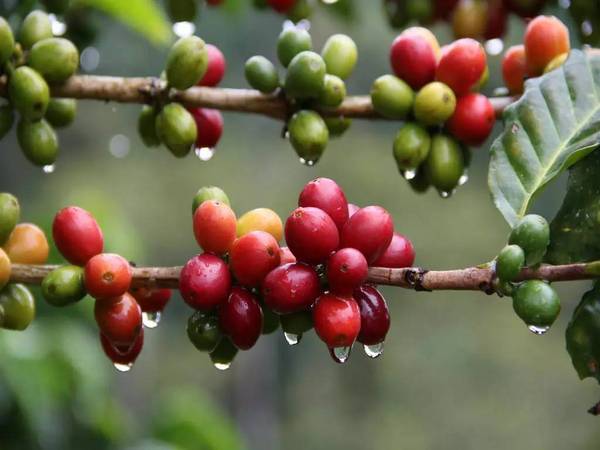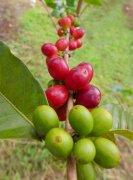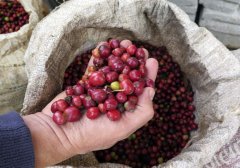Coffee cultivation: harvest in Nicaraguan Coffee Farm

For professional baristas, please follow the coffee workshop (Wechat official account cafe_style)
The series of claps woke me up from my sleep. For a second or two, the darkness in front of my eyes did not become clear because of pupil dilation. At that moment, I remembered that I was in an isolated valley with no electricity.
The sun went down for only a few hours, and there were no computers, televisions and other entertainment in the farm. I wanted to keep a diary, but there was no electric light. Raise your head to look at the stars with your friends after dinner, talk for a while and then go to sleep. Take out the smart phone at the bedside that relies on timing, taking pictures and lighting at night. It's 2: 00 in the morning. It turned out that the female workers in charge of meals had to start preparing food for the dozens of harvesters who stayed on the farm in the early hours of every morning. The slapping came from the sound of flattening the dough when they made a hand-made corn pancake (tortilla). Pancakes alone start with corn stripping, soaking in lime water, fermentation, cooking and grinding powder, and then rubbing powder to make 600 pieces. Farm meals are mainly starchy, such as red kidney bean rice (gallo pinto) and fried banana slices (plantain). White fried palm melon (chayote) and avocado are the most common melons we eat. They lit by starlight, made a fire by burning wood, and worked until dusk.
The harvest season is the sprint period for the coffee industry in Central America. Farmers usually hire temporary workers to pick ripe coffee fruits up the mountain. Depending on the size of the valley and the microclimate (micro-climate), the harvest time can be as long as two months. People in nearby villages have long been accustomed to this mode of work and have gone up the mountain to apply for the job. Some of them are old and young, and some of them are mobilized by the whole family. Discuss the humanitarian position of coffee trade from a macro point of view in your spare time. Only through personal experience can we know that real fairness is not only a floor price, but also the necessities and care that farm owners give to workers: even temporary workers, they will provide adequate food, accommodation, medical care and often neglected bathing and sanitation facilities.
Picking strength is the key.
It was not light yet, and everyone was ready to go. Our mountaineering waterproof outfit contrasts sharply with the pickers' thin coats, jeans and sandals. The equipment they value most is a rope tied around their waist, a rattan basket, and several nylon bags that can hold tens of kilograms. The mountain road was uneven, and we were interspersed among the dense forests with no paths and no handrails, and we were soon thrown away by the workers. They gathered around every coffee tree that passed by, picking with both hands and balancing at a tricky angle. The rare thing is that each of them knows how to leave the immature, orange-red fruit on the tree and wait a week or two before it is harvested for the second time. The strength of picking is very important, unlike picking raisins at home, too little force will tear off the skin, too much strength will damage the branches and affect the growth of stamens in the coming season.
"hiss!" Whistles resounded through the hills. This is the signal sent twice a day from the hillside collection station. The speed at which the workers descend the mountain is more surprising than that of going up the mountain. In terms of inclination, the coffee garden is comparable to the serpent tip in Saigon. They go down the mountain in flat sandals and carrying the weight of six packs of rice! This kind of exercise needs to go back and forth twice a day. I earn about ten dollars a day. For Nicaragua, it is already a high salary.
After dinner, several workers were tossing coins on the vacant lot, and a couple showed their friends my Polaroid: their first photo.
In fact, satisfaction can be very simple.
Photo: Patrick Tam (owner of the boutique coffee shop Knockbox, approved barista of the American Fine Coffee Association and European Fine Coffee Association, American CQI recognition cup tester, Cup of Excellence's first Hong Kong judge)
Important Notice :
前街咖啡 FrontStreet Coffee has moved to new addredd:
FrontStreet Coffee Address: 315,Donghua East Road,GuangZhou
Tel:020 38364473
- Prev

Coffee planting: sowing seeds in coffee estates in Nicaragua
Professional baristas Communication Please follow the Coffee Workshop (official Wechat account cafe_style) when you were young, you visited the nursery. All you know is to plant seeds, irrigate them on time, and have enough sunshine, so that the seedlings will grow. With more scientific knowledge, we also realize the importance of fertilization and disinfestation. People who grow up in cities have little contact with the lives of farmers except for potted plants at home. Because of coffee, the author is organic.
- Next

Coffee planting: coffee farm treatment in Nicaragua
Communication of professional baristas Please pay attention to the water tank in front of the coffee workshop (Wechat official account cafe_style) is a density classifier (density syphon). No matter which method the coffee fruit will be treated later, all the red fruits should be screened here first.
Related
- Beginners will see the "Coffee pull flower" guide!
- What is the difference between ice blog purified milk and ordinary milk coffee?
- Why is the Philippines the largest producer of crops in Liberia?
- For coffee extraction, should the fine powder be retained?
- How does extracted espresso fill pressed powder? How much strength does it take to press the powder?
- How to make jasmine cold extract coffee? Is the jasmine + latte good?
- Will this little toy really make the coffee taste better? How does Lily Drip affect coffee extraction?
- Will the action of slapping the filter cup also affect coffee extraction?
- What's the difference between powder-to-water ratio and powder-to-liquid ratio?
- What is the Ethiopian local species? What does it have to do with Heirloom native species?

